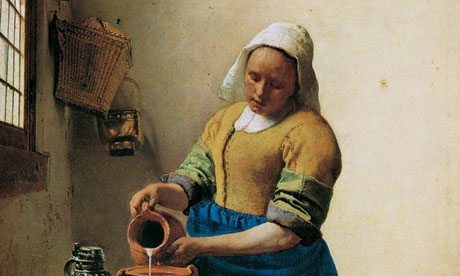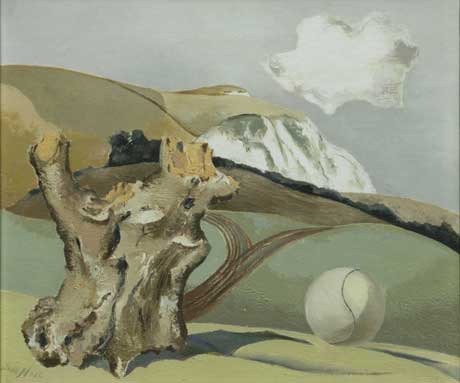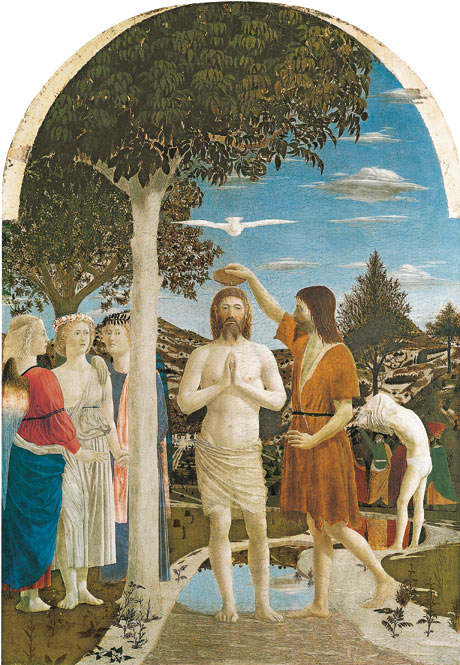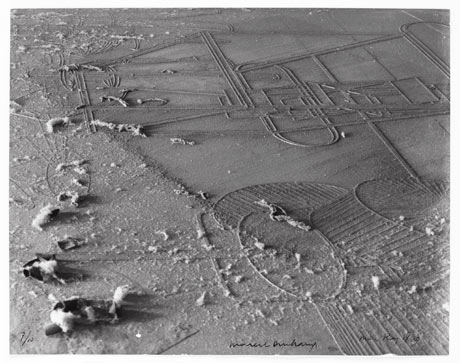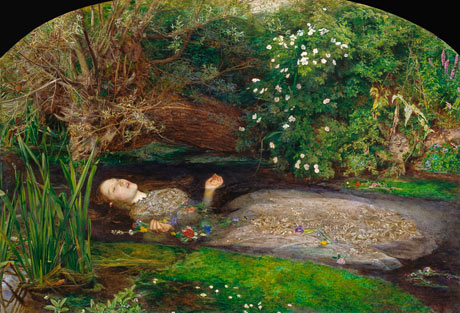
Rogue's gallery: Charles Saatchi
Suddenly, the press dares to criticise contemporary art. A number of coinciding events seem to have focussed a new, less reverential attitude towards the spin of the art world. Damien Hirst's retrospective at the Tate and Anish Kapoor's tower for the Olympics have borne the brunt of criticism in London. Not that these two do not invite harsh criticism in themselves, but last year they did not get it and now they do. The same strange thing happened in the USA, over Maurizio Cattelan's exhibition at the Guggenheim — last year a darling, this year a dud. Familiar artists with familiar styles; and these projects were years in the planning, so we could hardly have been shocked by them. I suspect they are picked on, now, as examples of something which once commanded timid respect, but with which we have lost patience. It is not Hirst and Kapoor, or Cattelan who have changed; it is we ourselves. We have not been disappointed; we have become disillusioned. But how? And why now?
Significantly, the most pointed criticism has been directed less at the art than the art market. Hari Kunzru, in the Guardian, looked at Damien Hirst's use of the market as an essential subject in his art, then suggested that Hirst's reputation depends on his having "single-handedly remade the global art market in his image". Felix Salmon, for Reuters, amended Kunzru's argument: "Hirst . . . has moved himself out of the art market and into the consumption-goods market: he manufactures art works, sets the prices for them, and sells them to anybody willing to buy them. Once you have bought a Hirst, you then exhibit it as a way of displaying your wealth and, um, taste."
Kapoor's ArcelorMittal Orbit, commissioned for the Olympic Park, provoked a different debate, over the state's irresponsibility in sponsoring art so inflated by fashion and so unappealing to the populace. Libby Purves, in The Times, called the tower "a twisted red object . . . painfully visible from the Stratford train for weeks. It is Britain's biggest public sculpture, cost £22.7 million, of which you and I paid more than £3 million."
The folly of public institutions submitting to the authority of the art market was also addressed in New York. Jed Perl, in the New Republic, wrote: "The truth is that Cattelan's presence at the Guggenheim has nothing to do with what the public may or may not want. Cattelan is at the Guggenheim because the big money in the art business is behind him." Perl noted that a minor Cattelan, a miniature model of two elevator doors, had recently been sold for more than a million dollars. These exhibition criticisms follow from a variety of broader art world exposés. Bryan Appleyard, for Intelligent Life, analysed Andy Warhol sales. Warhol is "the art market's one-man Dow Jones . . . nothing bounced out of recession quite like a Warhol . . . the rise in his average auction prices between 1985 and the end of 2010: 3,400 per cent. The contemporary-art market as a whole rose by about half that, the Dow by about a fifth."
There were humorous accounts of auction houses' shady work, and avid study of the manoeuvrings of Larry Gagosian, the art world's number one gallerist/fixer. David Segal wrote in the New York Times: "If you want to spend $30 million on a de Kooning, you can check what's in the catalogues of the coming Sotheby's and Christie's sales. But if you don't find what you want, you'll probably call Mr Gagosian." Board members of New York's New Museum were accused of using the galleries to aggrandise their personal collections, thus boosting values. Kunzru described the "corruption of art museums by investors", suggesting that the Tate Gallery, too, was compromised; it has shown works from the UBS investment bank's collection in return for lucrative sponsorship.
Dubious relationships between public galleries, private dealers and investors are not so new. A storm blew up in 2005 when the Tate bought for £600,000 a work by Chris Ofili, who sat on its board of trustees. After the press revealed the transaction, the Tate was censured by the Charity Commission. But, back then, such stories were usually only interesting to the "reactionary" press — the Telegraph, and specialist art publications like The Jackdaw. I suppose they were interested in the story primarily because they disapproved of sanctioning that sort of art — the dodgy transaction just made it juicier; corrupt business fomented by corrupt taste. The "progressive" press had the opposite agenda: they would try to ignore the corrupt business, as long as it sanctioned corrupt — i.e. anti-bourgeois — taste. The Left, through its own vanity, always too easily fell for the art world's oldest trick. Already in 1975 Tom Wolfe wrote: "Avant-garde art . . . takes the Mammon and the Moloch out of money, puts Levi's, turtlenecks, muttonchops, and other mantles and laurels of bohemian grace upon it." Not even Wolfe could foresee the artist's metamorphosis from bohemian to businessman, completing in 2008 when Hirst sold his own works at auction. Only after that auction could the Left take a stand against the art world. So now it is criticised from both flanks. The politics of taste are over; at this moment what matters — for the art journalist as much as for Hirst — is money.
Hirst's auction took £70.5 million on the day that Lehman Brothers went bust. A lot has been made of this coincidence — certainly it emphasised the irrationality and the untouchability of the art world. But we can make even more of it. Perhaps the banking collapse, as much as Hirst's unabashed commercialism, has brought the art world to its current disrepute. When towers of twisted glass seemed to shine money down on our cities, people were prepared to celebrate the absurdities of contemporary art. Its prices were glorious assertions of self-confidence; real value, even in an area as intangible as art, could just be created out of money, if the sum was high enough. Culture was to be the venerable crown for flaunting global finance. There was compensation here. I suspect some officials, especially in government, felt uneasy with the dogma that all this abstractly accumulated wealth was good for all, and so they guiltily willed from it this cultural deposit — they were desperate for substance, for their consciences' sake. Contemporary art would prove that all the money was for the good. Contemporary art was useful. Some of the modern super-rich learnt to launder their reputations as well as their money, with art. Money can be safer in some artists' names than in banks, but anything sold as art is more than an investment — it confers upon the buyer a sense of sophistication, even beneficence. The money laundering, whether for conscience or security or prestige, was easily disregarded, because it was more important that our riches were not just glorified, but at the same time dignified. Contemporary art was loved, I think sincerely, as a concealer of sins.
There is nothing new in using art to pay a spiritual debt. But we do it differently, now that we have developed a strange idea that art should be a reflection of our society. We decided that art is not to "soften and humanise the mind", as Sir Joshua Reynolds said — such lofty sentiments are now dizzying. Art is not the wise balm of beauty to our rough and rushing lives, it is just the odd fact excerpted from life; it should be as rough and rushed — and as blandly real — as the rest. But, strangely, despite the currency of nihilistic arguments, our minds have not so hardened that we can fully prise Art away from Virtue. Precisely the people who would laugh at the old ideas of Reynolds, and call him pompous, prudish, even sick, inherit from him their extraordinary esteem for art, whatever art may be. But they even exaggerate and pervert his esteem. Art is no longer for the good; art is, essentially, good. Therefore, since art reflects us, we must also be good. Perhaps that is why so many otherwise reasonable people have let their sanity slide and applauded contemporary art; and that is why they let art be the vehicle for money and reputation laundering. Wherever there is art, there must be good. The more there is, the better we are. And, with our drunken faith in markets, believing that value is price, the more expensive art is, the better it is, so the better we are. So they thought.
For people who had made mountains of money on intangible deals, the contemporary art world made sense. They were well prepared to accept that gigantic sums should shift around invisible qualities. And they were keen to shift more money. It was as if the very arbitrariness of which art became expensive, and therefore desirable, was their consolation. Their sort of art could not console, of course, but its awesome "value" could. The contemporary art world reflected the financial world perfectly, and the reflection was a flattering soother. Buying into Hirst, Warhol or any of the others, allows you to say: "Yes, I am proud of what I do for money, I make no apologies." It also says: "The market ethic I stand for is so powerful (so right?) that even art complies with it. Even what they grandly call ‘the aesthetic' will recognise the sovereignty of markets. The proof is on my wall." Art will celebrate the marketeer's way of life. It can be shiny, but crude; brash, but bland. And art can be commodified, and stocked.
The people acquiesced — it all seemed glamorous. But after the 2008 crash things have gradually changed. Contemporary art had dazzled as a market phenomenon, but we have become more sceptical about markets. We no longer believe that high prices indicate high value and, on the whole, high prices have lost our trust. For now, at least, we have once more learnt to scorn mammon; and mammon's minions have been the most visible players in the art world. Perhaps an art that excused sin so mercenarily was not so good after all.
The glamour is gone; we recoil at the lustre of those glass towers whose triumph now seems tragic. Kunzru refers to Hirst as "house artist to the 1 per cent". Perl wonders why, all of a sudden, even New York's most sycophantic critics were not amused by the Cattelan show: "Maybe they're tired of partying in a funhouse where they will never be more than dinner guests. As for the people who buy and sell Maurizio Cattelan, my guess is they don't give a damn what critics — or for that matter museumgoers — say." Clearly, it is now us against them; the contemporary art world has become toxic and so the critics are keeping away.
Recently I heard an art world appointee challenged about the validity of his work. The challenge was clichéd: "It is the emperor's new clothes!" Back came the ready-made reply: "The emperor is not naked, if we can see his clothes." I think this is not just a pitiable misunderstanding of the tale. Surely the appointee meant to imply:"This is our parade, not yours. You may cheer, but you cannot interject. The emperor is dressed as we deem fit, until, and only until, our committee should decide otherwise." So the art world, too, is squaring up. It will not go down without a fight. The procession may continue, but the party is over. The pointlessly rich can no longer excuse their pointlessness by sponsoring the most extravagantly pointless art — they only draw attention to it. Once, art laundered the reputations of art buyers whose financial power then inflated the importance and the price of art; now, the reputations of the same buyers are again soiled — by their very financial power — and it is their soiled reputations that are threatening to spoil their own investments; contemporary art risks being ruined by money. What an ironic twist — it is now the financial world, sins and all, that reflects badly on art. Contemporary art has finally become uncool. Because of money. Money has become uncool. The aesthetic of superficiality, of shallow shiny rich, is dead and rotting. (Can you imagine a television network commissioning Sex and the City today?) Now art seems ugly because it is expensive; before, it seemed beautiful, or at least fascinating, because expensive. Vulgarity is vulgar again! So much so that even Charles Saatchi uses the word.
He shocked everyone with a recent article in the Guardian: "Being an art buyer these days is comprehensively and indisputably vulgar. It is the sport of the Eurotrashy, Hedge-fundy, Hamptonites; of trendy oligarchs and oiligarchs." Saatchi, the man who made the reputations of almost all the artists now deemed most offensive, with an adman's snigger, tries to position himself away from the art of the 1 per cent. He sides with the masses, of course, to whom he has always sidled for his sell. He even pretends to be brainwashing his reader, implying that conceptual art has not been his problem; now conceptual art is just for those who are too timid to judge on painting: "For professional curators, selecting specific paintings for an exhibition is a daunting prospect, far too revealing a demonstration of their lack of what we in the trade call ‘an eye'." Back then when it suited him, Saatchi would have laughed at the idea of "an eye". It is only a small exaggeration to say that the aesthetic of superficiality was his own aesthetic, the advertiser's aesthetic defiantly conquering the terrain of art. Saatchi is alert to the public mood — that is the success of his business. In that public mood he must have noticed the significant new attitude. Contemporary art's old allure is gone. Since the art is not cool, the advertiser is hedging. He declares himself out before the others — the only way to stay cool.
Without cool, contemporary art may be devastated. A contributor to Vice magazine, a young person's guide to correctly subversive fashions, inadvertently showed how art is failing. "You know what? I'm sick of pretending. I went to art school, wrote a dissertation called ‘The Elevation of Art Through Commerce: An Analysis of Charles Saatchi's Approach to the Machinery of Art Production Using Pierre Bourdieu's Theories of Distinction', have attended art openings at least once a month for the last five years, even fucking purchased pieces of it, but after attending the opening of the new Tracey Emin retrospective at the Hayward Gallery, I'm finally ready to come out and say it: I just don't think I ‘get' art."
The critic is in earnest, but he is not wholly honest with himself. He "got" art when it was cool; he does not "get" art when it is uncool. He "got" art because it was cool. And he really got it, as we can see from his dissertation title. He is a fashionable person. Accidentally, he confirms what every sane person always knew: contemporary art is just a branch of fashion. Judgment of contemporary art is a matter of being "on trend", not of discerning qualities. He is "finally ready to come out and say it", now, because this is just the moment a fashionable person would say it — the moment art lost its cool. If the fashionable crowds, with the critics, move away, art loses its status as commodity. It can still be a stock, of course, but it is riskier. The cheeriest sections of the crowd are now doubting, and pointing, so the big investors, with the museum directors in their pockets, will have to guard the emperor's clothes more vigilantly.
The artists, though, are fashionable people; for a while now we have seen them sensing the public mood and, like Saatchi, appeasing it as quickly as possible. In late 2009 Hirst remade himself as a painter, staging a show at the Wallace Collection so that his pictures could be seen one room away from Rembrandt. There was the usual vanity, but more important is the suggestive repositioning of his work, from commodity to high art. Just like Saatchi and his "eye", Hirst trusts paintings to have the power to convince people of high-minded intentions, and make them forget sins that fell out of fashion. In a recent interview Hirst referred to the influence of William Blake, Rodin, Bomberg, Bacon. When Hirst was at the peak of his popularity in the 1990s, he referred to older art, such as painting, only to introduce his epiphany about "visual language". "I was thinking that all the beautiful art always existed in the past . . . I suddenly realised that I'm walking round with my fucking head on the ground. And if you pick your head up, there's fucking advertising billboards and TV and magazine images and fashion and design and film [ . . . ] As soon as I lifted my head up off the ground, that's when I realised that all the stuff I saw wasn't shit."
Meanwhile, Tracey Emin has accepted the appointment of Professor of Drawing at the Royal Academy. The appointment really says more about that institution than about Emin, but it tells us that Emin, too, is anxious to position herself with craft and tradition, to move away from what was fashionable. Even the artists, now in desperate disguise, are jumping from the procession and trying to join the murmuring crowd. They have heard the music, and shivered.
And now the art world's officials are catching up; they are learning from the artists this new way to guard the new clothes. They claim that the clothes, however meagre they may seem, derive from a venerable tradition, not a vulgar fashion. Rachel Campbell-Johnston in The Times identified the new approach. "It's back to the future for culture. The 2011 Venice Biennale opened with three Tintoretto paintings . . . Cy Twombly was shown in the context of Poussin a few months ago." Tracey Emin's return to Margate was "marked by a sedate display of drawings shown alongside pieces by Rodin and Turner". And "the trendsetting Frieze [art fair] marks its tenth year by inaugurating Frieze Masters." She justifies this turn of events: "Artists who until now have charged forwards in the vanguard of fashion are starting to wonder about their place in history, not least as markets for the contemporary start to look rocky." Campbell-Johnston cannot ignore the effect of falling prices, especially on the credibility of contemporary art. But she is happiest to see this new trend mostly as a sign that the art world is growing up and developing a historical sense — for her, the artists are just seeking to define their rightful place in the story of art. She concludes that this new historical sense endows contemporary art with a "gravitas that transcends fickle fashion". That is certainly the idea. "Meanwhile the past is endowed with relevance, infused with a fresh pizzazz. Either way, it's art that is the winner." Or, perhaps, art barely comes into it. This is about safer investments; this spurious historical validation of contemporary art (Twombly and Poussin! Emin and Rodin!) must be an attempt to secure old investments now suffering, and to encourage new investments. The past is no more relevant to investment prospects, or art buyers in general, than it ever was. The reason now for distancing art from fashion is not that the audience be convinced of a new "gravitas" but that the buyers are convinced that what they buy is of permanent value. To Campbell-Johnston it means that "contemporary art is at the end of its cycle". Or is this actually contemporary art's last resort?
Of course it is amusing to watch the art world fumbling thus to repudiate itself. But this does not mean we should assume a return to saner appreciations of culture — we must remain watchful. Of Kapoor's tower, Purves wrote: "It . . . looks hideous to me: a piece of vainglorious sub-industrial steel gigantism, signifying nothing." But the tower is signifying plenty. It may well look hideous, but it is doubly hideous for what it is overtly signifying. It is just a toy version of Tatlin's Tower, the proposed headquarters for the Comintern in Petrograd (now St Petersburg). Everyone on the academic side of the art world will recognise it, and smirk. Tatlin's unbuilt designs, from 1917, have come to symbolise the dormant Marxism in modern art. I have lost count of how many models I have seen, and how many contextual exhibitions have been devoted to the tower in recent years, let alone how often it is piously mentioned in essays on "art theory".
A reverential tribute to modernist orthodoxy, in its mode of address to the art world, Kapoor's tower harks back to times before Hirst. It begs for credibility, and sophisticated money, by appealing to sentimentality over subversive politics. Before the super-rich had found an art shiny and shallow enough to help them love their bare reflection, for near on a century they had been buying into an art which, as a polished incarnation of the revolutionary spirit, agreeably distorted their reflection. The new super-rich, with the collusion of cultural authorities, use art to say, "We are who we are, and isn't it fabulous!" The old super-rich, colluding with the same authorities, used art to say, "We are not what we seem, we are righteous and ready for the struggle!" Please let us not go back there.
Thank you to Reinhard Reitzenstein for bringing this artilcle to my attention
http://standpointmag.co.uk/
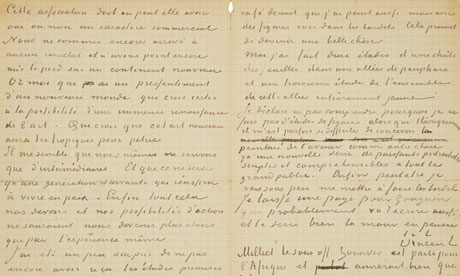
 In this fascinating series of works, Hungarian new media artist
In this fascinating series of works, Hungarian new media artist 

 In the case of Fra Angelico’s Annunciation, Hajdu has taken the liberty to leave a scarf behind for where the Virgin Mary was sitting. In this one scene, we’re left to feel that the angel has just left and the Madonna gone inside. And even if the floor shadows are a little bizarre in Hajdu’s rendering, it only helps us to see that the geometric arrangement of the scene in general is quite peculiar in and of itself.
In the case of Fra Angelico’s Annunciation, Hajdu has taken the liberty to leave a scarf behind for where the Virgin Mary was sitting. In this one scene, we’re left to feel that the angel has just left and the Madonna gone inside. And even if the floor shadows are a little bizarre in Hajdu’s rendering, it only helps us to see that the geometric arrangement of the scene in general is quite peculiar in and of itself.































